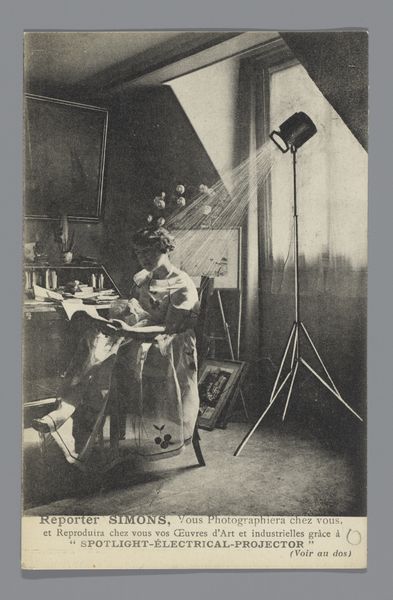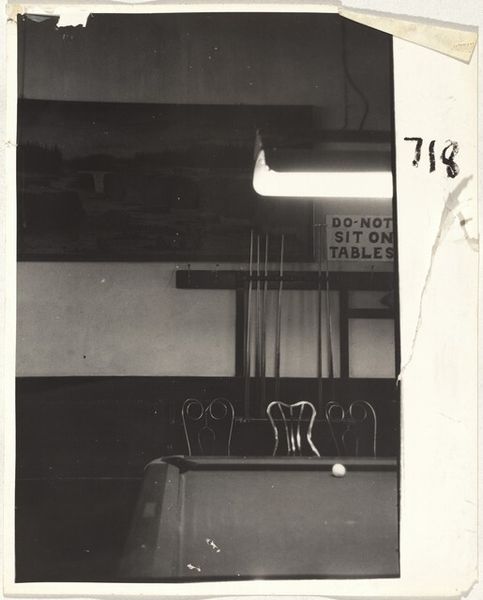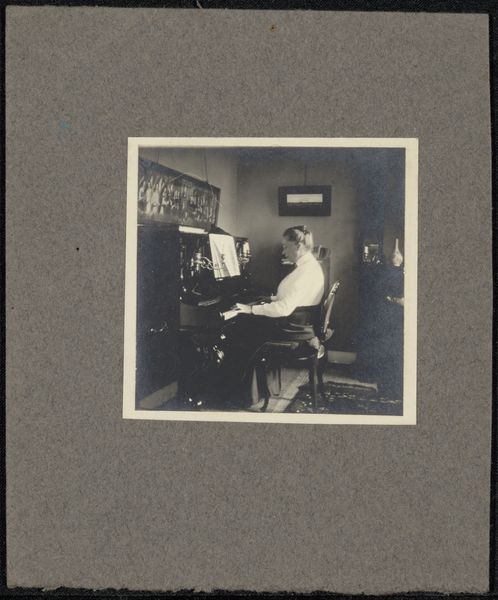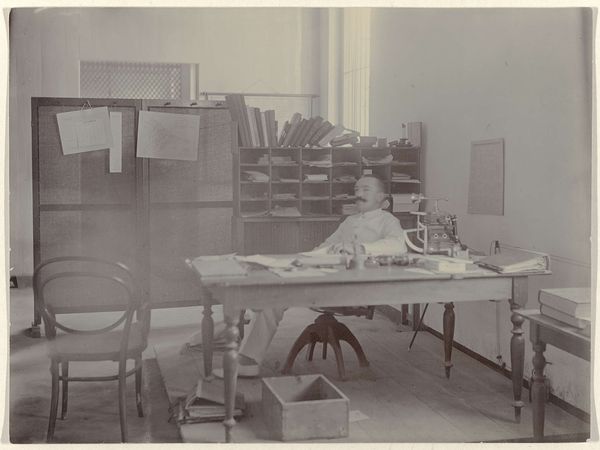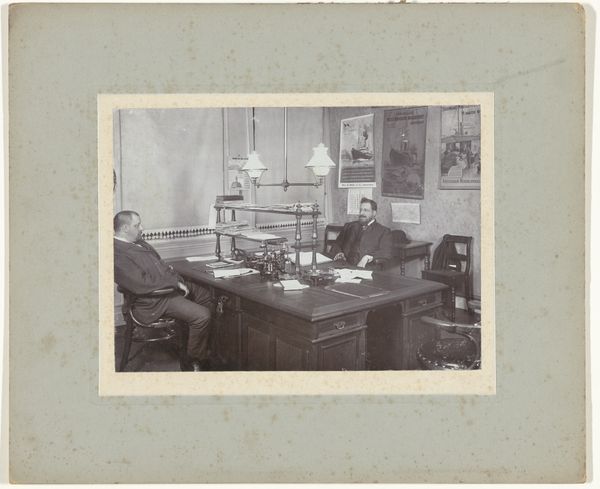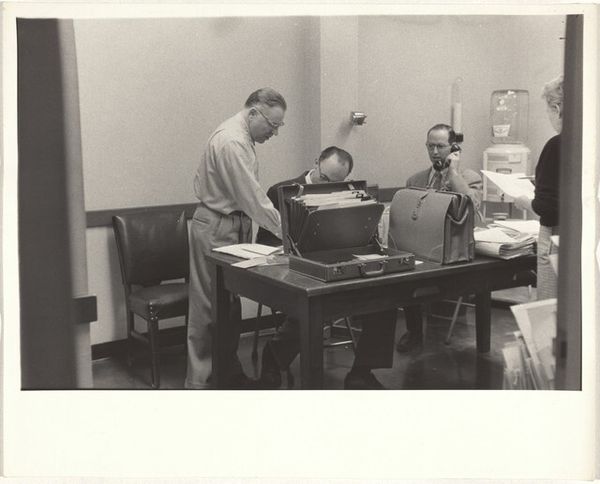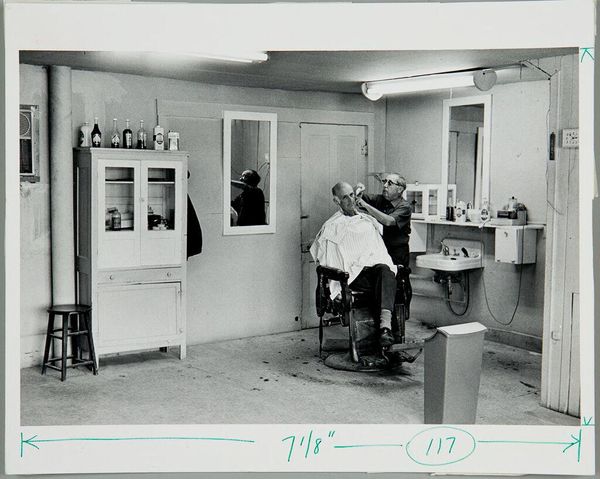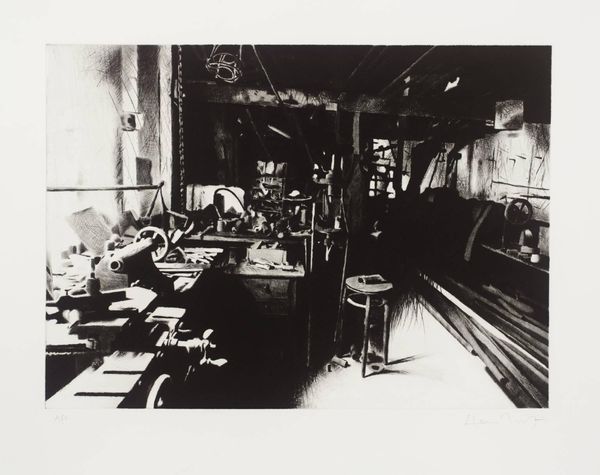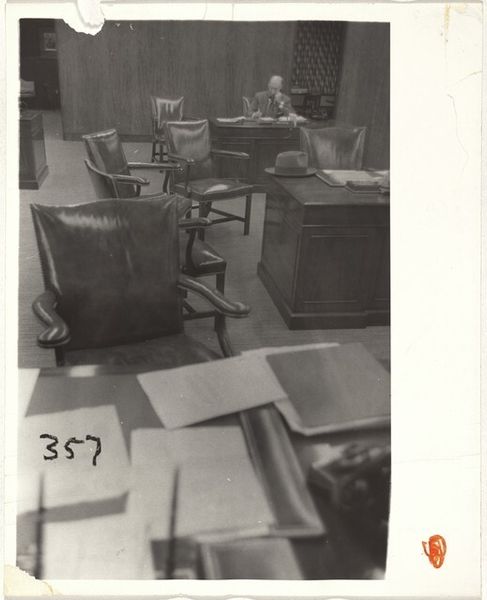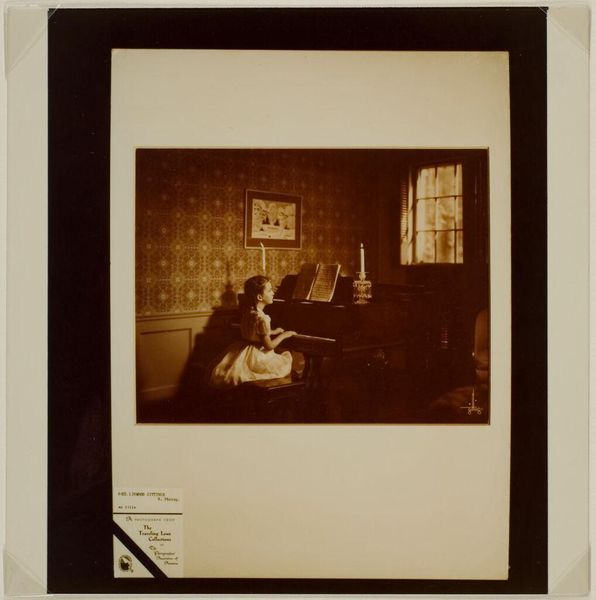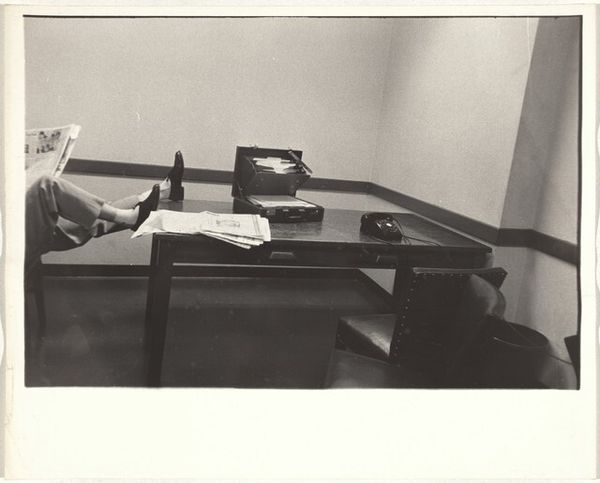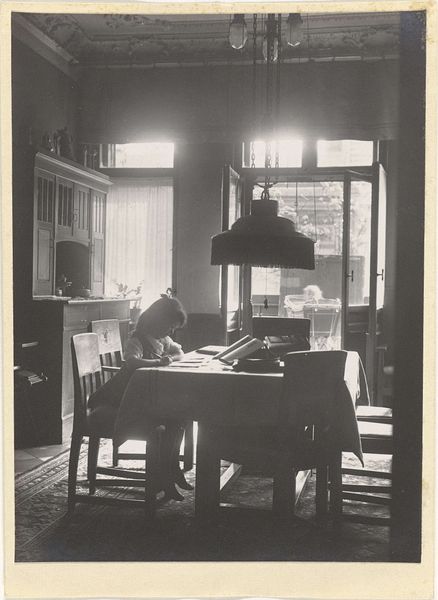
#
film photography
#
wedding photograph
#
photo restoration
#
wedding photography
#
colourisation
#
archive photography
#
historical photography
#
couple photography
#
monochrome photography
#
celebration photography
Dimensions: image: 15.7 x 11 cm (6 3/16 x 4 5/16 in.) sheet: 16.2 x 11.5 cm (6 3/8 x 4 1/2 in.)
Copyright: National Gallery of Art: CC0 1.0
Curator: This is "Hermann Segesser's studio," a gelatin silver print by Robert Frank, taken between 1941 and 1942. Editor: My first impression is of obsolescence. The stark geometry of the equipment is fascinating, but it evokes a sense of antiquated technology, almost ghostly in its stillness. Curator: Precisely. The composition highlights the sheer mechanics of early photography. Consider the large format camera; its bellows fully extended, dominating the scene with its intricate architecture of levers and planes. Frank is foregrounding process itself. Editor: And that process, however painstaking, was also highly exclusive. Photographic portraiture was far from democratic in the 1940s. Studios like Segesser's served a particular social class, reinforcing societal hierarchies through representation. It makes me wonder about the people who crossed this threshold and what narratives were carefully constructed within these walls. Curator: Certainly, we must acknowledge the selective nature of the photographic gaze. However, note the masterful use of light and shadow. See how Frank articulates depth using only subtle gradations in tone, creating a self-referential interplay of light and image creation. The reflectors in the background become abstract forms that speak to the technical foundations of visual art. Editor: But that foundation wasn't neutral. While Frank shows us the tools, those tools helped create and maintain power structures. How complicit were studios in perpetuating harmful stereotypes or erasing marginalized communities through omission? A studio is not simply a place of art; it’s also a space of social performance. Curator: I agree that photographic images must always be interrogated for their underlying ideologies. Yet, on a formal level, observe how the verticals and horizontals of the equipment establish a rigorous, almost classical, composition, which contributes to the timeless quality the image has. Editor: A 'timeless' quality achieved through a very specific historical lens. By stripping away the human element and emphasizing the apparatus, Frank inadvertently highlights the social machinery at work in image making. What is missing is just as important as what is present. Curator: A potent point, indeed. It certainly reminds us of the multilayered narratives embedded within even seemingly straightforward depictions. Editor: Ultimately, Frank's work prompts us to not only observe, but to actively question.
Comments
No comments
Be the first to comment and join the conversation on the ultimate creative platform.
